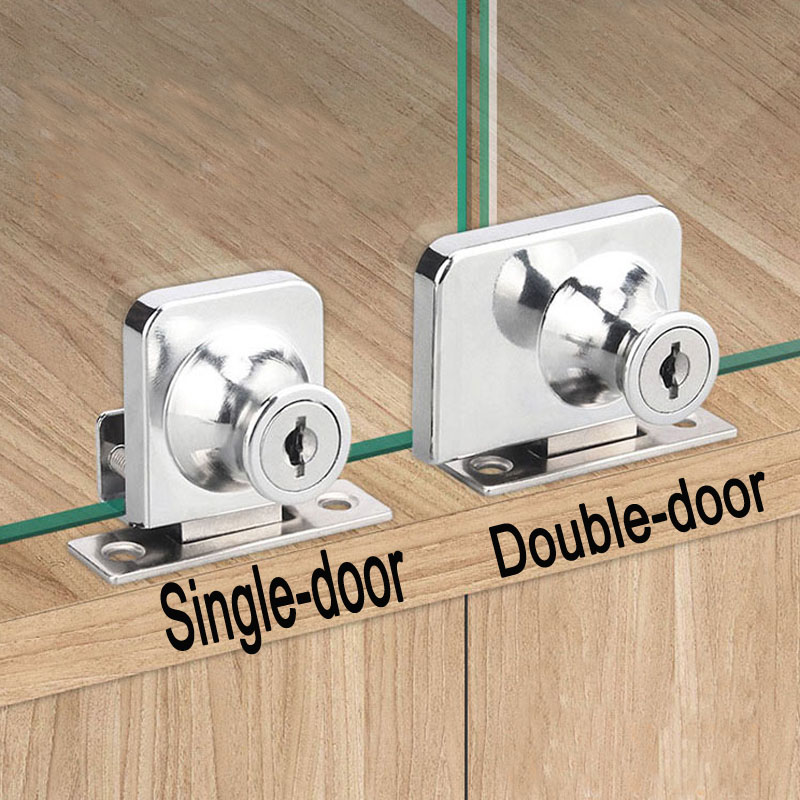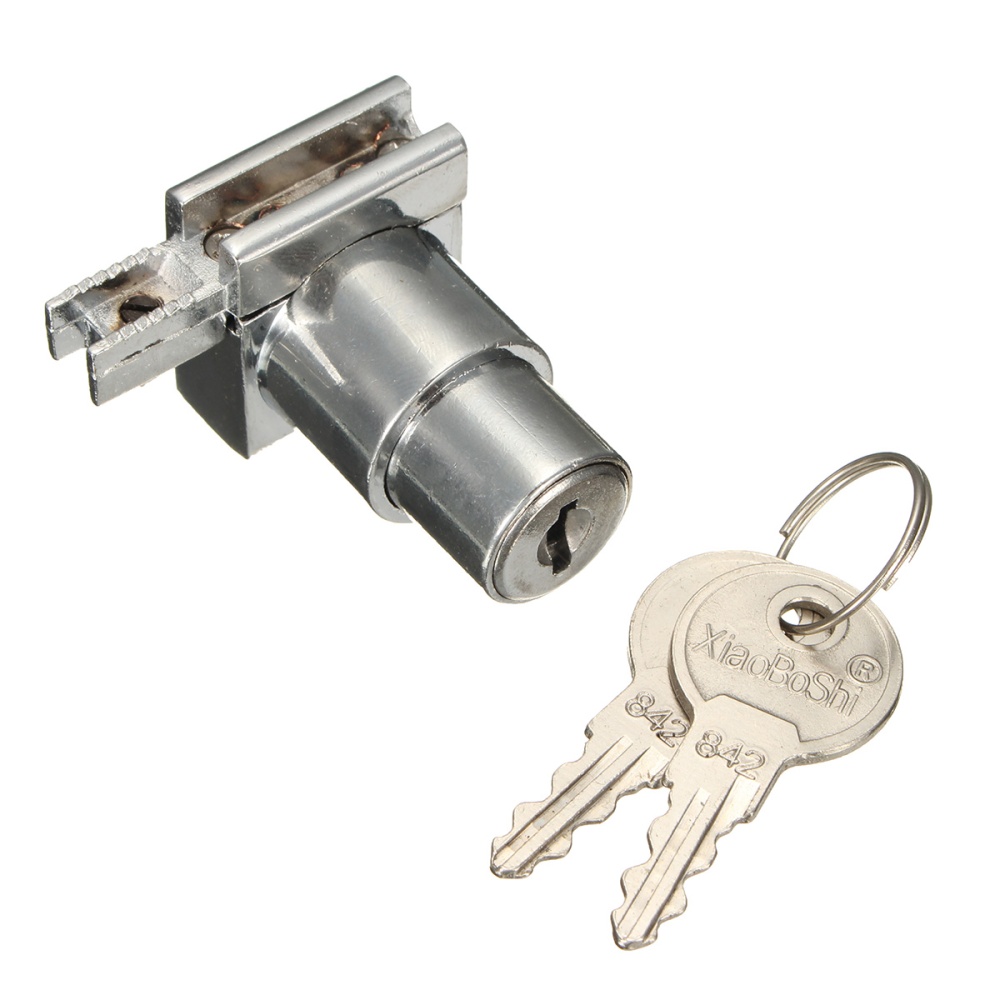Types of Glass Cabinet Door Locks

Glass cabinet doors are a popular choice for modern kitchens and bathrooms, offering a sleek and stylish look. However, they also present a unique challenge when it comes to security. Traditional locks designed for wooden doors are not suitable for glass, requiring specialized lock types that can securely fasten to the glass surface.
Types of Glass Cabinet Door Locks
Different glass cabinet door lock types offer varying levels of security, installation methods, and aesthetics. Each type has its advantages and disadvantages, making it important to choose the lock that best suits your needs.
- Latch Locks: These are the most common type of glass cabinet door lock, featuring a simple latch mechanism that engages with a strike plate on the cabinet frame. They are typically installed using adhesive or screws, depending on the glass thickness. Latch locks are relatively inexpensive and easy to install, but they offer minimal security and can be easily forced open.
- Deadbolt Locks: Deadbolt locks provide a higher level of security than latch locks, as they feature a bolt that extends into the strike plate, making it more difficult to pry open. Deadbolt locks for glass doors are typically installed using adhesive or screws, and some models come with a key cylinder for added security. While they offer improved security, deadbolt locks can be more expensive and may require professional installation.
- Magnetic Locks: Magnetic locks utilize a magnetic force to secure the door, eliminating the need for a traditional latch or bolt. These locks are typically installed using adhesive and are very discreet, as they have no visible hardware on the door. Magnetic locks are easy to install and offer a clean aesthetic, but they may not be as secure as other types of locks, especially in high-traffic areas.
- Keyless Locks: Keyless locks offer a modern and convenient alternative to traditional key locks, allowing access using a code or fingerprint. These locks are typically installed using adhesive or screws and are available in a variety of styles. Keyless locks are secure and convenient, but they can be more expensive than other types of locks and may require batteries.
Comparison of Glass Cabinet Door Locks
The following table summarizes the key features, installation methods, and security levels of different glass cabinet door lock types:
| Lock Type | Installation Method | Security Level | Pros | Cons |
|---|---|---|---|---|
| Latch Lock | Adhesive or screws | Low | Inexpensive, easy to install | Minimal security, easily forced open |
| Deadbolt Lock | Adhesive or screws | Medium | Improved security, available with key cylinder | More expensive, may require professional installation |
| Magnetic Lock | Adhesive | Low to Medium | Easy to install, discreet, clean aesthetic | May not be as secure as other types, not suitable for high-traffic areas |
| Keyless Lock | Adhesive or screws | High | Secure, convenient, modern aesthetic | More expensive, requires batteries |
Installation and Maintenance

Installing and maintaining glass cabinet door locks is crucial for ensuring their security and longevity. Proper installation ensures the lock functions correctly and provides the intended level of security. Regular maintenance keeps the lock operating smoothly and prevents premature wear and tear.
Installing Glass Cabinet Door Locks
Installing glass cabinet door locks requires careful consideration of the lock type and the glass thickness. Different lock types have specific installation methods, and improper installation can damage the glass or compromise the lock’s security.
- Installing a Latch-Type Lock: Latch-type locks are common for glass cabinet doors. These locks typically use a latch mechanism that engages with a strike plate on the cabinet frame. The installation process involves drilling holes in the glass and the cabinet frame, then attaching the lock and strike plate. The lock’s mounting plate is usually secured to the glass using adhesive or screws.
- Installing a Mortise Lock: Mortise locks are more robust and offer higher security than latch-type locks. These locks require a mortise, or a cutout, in the glass and the cabinet frame. The installation process involves creating the mortise, fitting the lock into the mortise, and securing it in place.
- Installing a Deadbolt Lock: Deadbolt locks are designed for high-security applications. These locks typically require a separate deadbolt mechanism that engages with a strike plate on the cabinet frame. The installation process involves drilling holes in the glass and the cabinet frame, then attaching the lock and strike plate.
Maintaining Glass Cabinet Door Locks
Regular maintenance is essential for keeping glass cabinet door locks in optimal condition. This includes lubrication, cleaning, and troubleshooting any issues.
- Lubrication: Lubricating the lock’s moving parts helps prevent wear and tear and ensures smooth operation. Use a light lubricant, such as graphite powder or a dry lubricant spray, to lubricate the lock’s latch, bolt, and other moving parts.
- Cleaning: Cleaning the lock helps remove dirt, grime, and other debris that can interfere with its operation. Use a soft cloth and a mild cleaning solution to clean the lock’s exterior and moving parts. Avoid using harsh chemicals or abrasive cleaners that can damage the lock.
- Troubleshooting: If the lock is not operating correctly, troubleshoot the issue by checking for common problems, such as a stuck latch, a loose bolt, or a damaged strike plate. If you are unable to resolve the issue, consult a locksmith for professional assistance.
Security Considerations

Glass cabinet door locks, while aesthetically pleasing, can present unique security challenges. The strength and security of a glass cabinet door lock depend heavily on the lock’s design, installation, and the value of the contents being protected.
Choosing the Right Lock for the Value of Contents
Selecting the appropriate lock is crucial for safeguarding your belongings. Factors such as the value of the items stored within the cabinet and the level of security desired should guide your decision.
- For valuable items, such as expensive jewelry, antiques, or sensitive documents, consider using a high-security lock with multiple locking points and a robust design. These locks offer superior resistance against tampering and unauthorized access.
- For items of lesser value, a standard lock with a single locking point may suffice. However, ensure the lock is of good quality and properly installed.
Security Features of Different Lock Types
Different lock types offer varying levels of security. Understanding the strengths and weaknesses of each type is essential for making an informed decision.
- Deadbolt Locks: Deadbolt locks are considered highly secure due to their robust design and the use of a solid locking bolt. These locks are difficult to pick or force open, making them ideal for protecting valuable items.
- Lever Handle Locks: Lever handle locks are generally less secure than deadbolt locks. They can be vulnerable to picking and forced entry, particularly if the lock is of low quality. Lever handle locks are often used for cabinets with less valuable contents.
- Magnetic Locks: Magnetic locks are relatively easy to install and provide a clean aesthetic. However, they can be less secure than other lock types, as they can be easily bypassed using a strong magnet.
- Combination Locks: Combination locks offer a high level of security when used correctly. They are resistant to picking and forced entry, but can be compromised if the combination is compromised.
Additional Security Measures
Beyond the lock itself, incorporating additional security measures can significantly enhance the protection of your glass cabinet door.
- Alarms: Installing an alarm system on your cabinet door can deter potential intruders and alert you to unauthorized access. Alarms can be triggered by door opening, tampering, or vibration, providing immediate notification of any security breach.
- Surveillance Systems: Using surveillance cameras to monitor the area around your cabinet door can deter potential intruders and provide evidence in case of a break-in. Cameras can be installed discreetly and can capture footage of any suspicious activity.
- Strong Glass: Consider using tempered glass for your cabinet door, which is more resistant to breakage than standard glass. Tempered glass is designed to shatter into small, blunt pieces rather than sharp shards, minimizing the risk of injury during a break-in attempt.
Glass cabinet door locks – Nah, siapa sih yang mau koleksi barang-barang mahalnya dibobol? Pasang aja kunci di lemari kaca biar aman! Ngomongin aman, kalau lagi liburan ke New York, mendingan cari tempat tinggal yang nyaman dan mewah. Best 2 bedroom suites in NYC bisa jadi pilihan yang pas buat kamu! Soalnya, kalau barang-barang kamu aman di lemari, liburanmu juga makin tenang, kan?
Bos, lagi nyari kunci pintu lemari kaca yang aman? Kalo di rumah lagi banyak barang berharga, mending cari yang bagus deh. Eh, ngomong-ngomong, kalo lagi butuh tempat liburan yang nyaman dan sejuk, coba deh cek sands of kahana 2 bedroom.
Sambil liburan, bisa sekalian cari inspirasi buat upgrade kunci lemari kaca di rumah. Hehehe, pasti aman dan kece!
